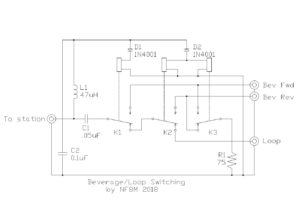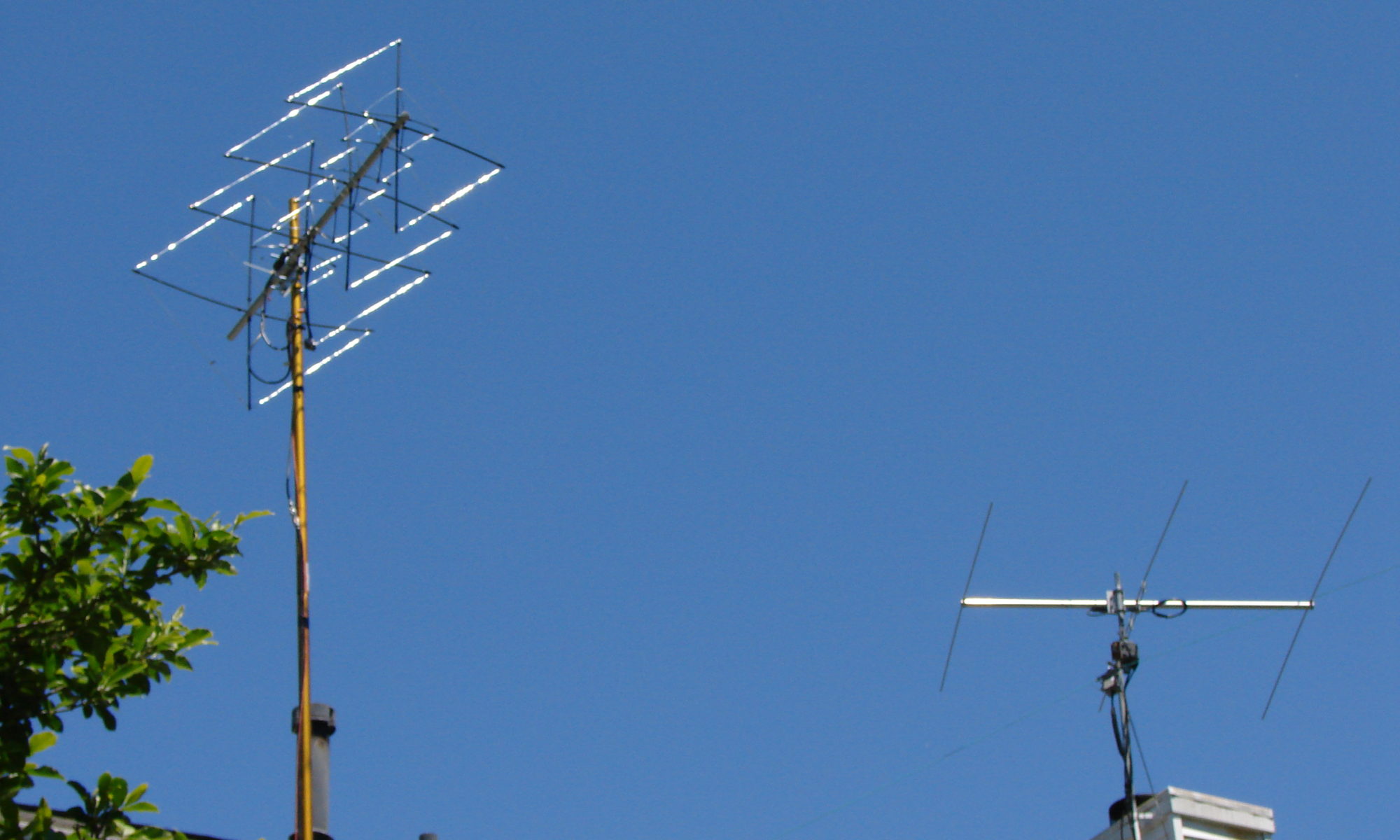A few years ago I built a shielded loop for receiving on 160 meters, but after attending W3LPL’s Contest University session on effective top band antennas, I thought about installing a better receive antenna. The loop does a decent job, with the 15 dB preamp I built to go along with it, but Frank pointed out that a Beverage antenna generally has better gain, directivity, and front/back ratio than a loop. There happens to be some forested land behind and down the block from our house, so I decided to try putting up a Beverage and see how it works.
Most Beverage antennas are directive in a single direction, but it’s possible to build a reversible Beverage if the proper transformer and termination configuration is used. Due to the complexity of building the networks and doing it right, I picked up a pair of KD9SV reversible Beverage antenna transformers from DX Engineering. I had a few hundred feet of surplus twisted pair telephone wire, and hung it in the trees from the corner of my yard and off into the woods. It’s about 250 feet long, or roughly a half wavelength on 160 and a full wavelength on 80 meters, which is about the minimum length for the antenna to be effective.
The KD9SV transformers connect to the twisted pair at each end. The far end is grounded with either a short radial system or a four foot ground rod, and the near end is likewise grounded and has a pair of F connectors, one for the  forward direction and one for the reverse. I also built a relay switching box that uses positive and negative phantom power (12 volts DC on the coax) to activate the relays, injected at the shack using a MFJ 4118 bias tee. With no voltage on the coax, the normal relay contacts switch the loop in, and positive and negative voltage switches the forward and reverse directions respectively.
forward direction and one for the reverse. I also built a relay switching box that uses positive and negative phantom power (12 volts DC on the coax) to activate the relays, injected at the shack using a MFJ 4118 bias tee. With no voltage on the coax, the normal relay contacts switch the loop in, and positive and negative voltage switches the forward and reverse directions respectively.
Initial evaluation shows that the antenna has quite good signal levels. Many S9 signals are heard without either an external preamp or the rig’s internal preamp. Due to its short length, it’s not particularly directive, though there is about a 2 S-unit (12 dB) front to back ratio on stations that are along the axis of the antenna. Stations broadside to the antenna are still heard, just not as strong.
My hope is to be able to hear KL7 better and work the last state I need for 160 Worked-All-States this winter, as well as try to add to my Europe country count. It’ll get a checkout during the CWT this week and I plan to use it for the upcoming top band contests (Stew Perry and CQ 160).
I’ll put some pictures up in the gallery soon.
